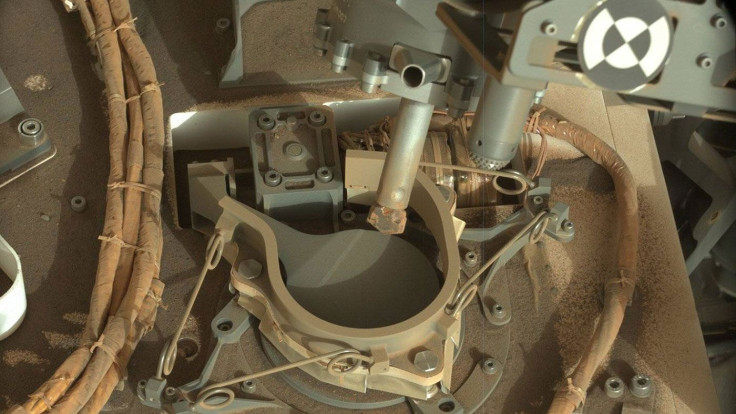NASA’s Curiosity Mars Rover Starts Analyzing Drilled Rocks After Year-Long Break

After more than a year, NASA’s Curiosity rover has successfully delivered rock powder extracted from the Martian surface to one of its two onboard labs, regaining the critical ability to analyze surface samples on the red planet.
The deployment of the lab on May 31 marks a major milestone for the agency, which has worked extremely hard to fix Curiosity’s drilling and sample analysis capabilities. The technology-rigged rover’s original drilling mechanism suffered a number of issues in 2016 and lost its upward and downward movement by the end of that year.
The problem kept the robotic vehicle from extracting and analyzing Martian rock samples and severely affected the mission. However, the team of scientists at NASA worked on a percussive method called feed extended drilling, wherein the force of rover’s extended robotic arm is used to push the drill forward into the rock in a freestyle manner.
On May 20, the method worked as the agency expected and Curiosity was able to drill into a rock named Duluth. Now, for the first time since the drilling malfunction, the powder samples extracted from the Martian surface have been transferred into the mineralogy lab of the rover using an additional technique called "feed extended sample transfer".
As part of the new method of transferring samples into the onboard lab, Curiosity positions its drill over two small inlets on top its deck and trickles the suitable amount of rock powder required by the lab to conduct the analysis.
Though the entire process was tested on Earth, delivering a suitable amount of sample on Mars was not that easy and required extra attention. Essentially, the environment of Mars is dry and thin, which creates completely different conditions for the samples trickling down from the drill. If too much of the powder is delivered, then the instruments of the rover could get clogged, and if it’s too less, the analysis might not be accurate.
"On Mars, we have to try and estimate visually whether this is working, just by looking at images of how much powder falls out," John Michael Moorokian, the engineer who led the development of the new sample delivery method, said in a statement. "We're talking about as little as half a baby aspirin worth of sample."
NASA has said the testing of the new drilling and sample delivery method will continue as the Curiosity team analyzes the results of the lab analysis. Meanwhile, the delivery of sample into the rover’s chemistry lab is also slated to occur in a few days.
"The science team was confident that the engineers would deliver -- so confident that we drove back to a site that we missed drilling before. The gambit paid off, and we now have a key sample we might have never gotten," Ashwin Vasavada, the mission's project scientist, said in the statement. "It’s quite remarkable to have a moment like this, five years into the mission. It means we can resume studying Mount Sharp, which Curiosity is climbing, with our full range of scientific tools."
© Copyright IBTimes 2024. All rights reserved.





















